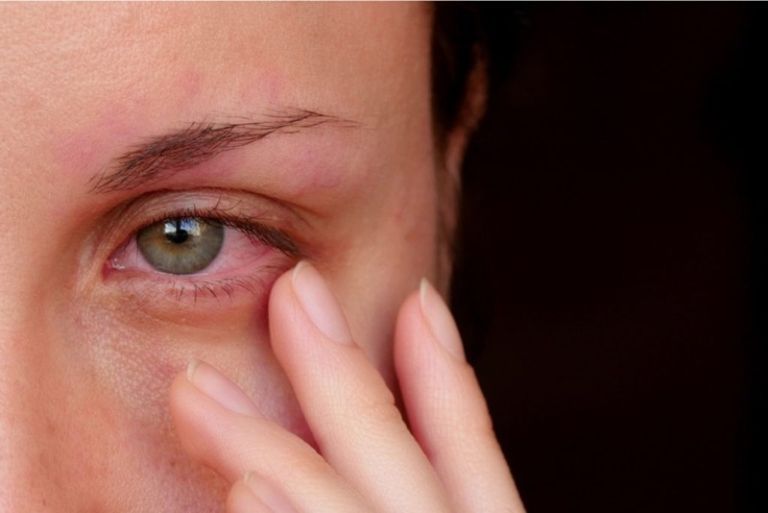Why Does Excessive Screen Use Make Children More Prone to Myopia?

Screens play an essential role in children’s daily life
Screens have become an integral part of both learning and entertainment. Children use laptops, tablets, TVs, and smartphones to study online, complete homework, or watch entertainment content. However, science shows that excessive screen use and viewing at very close distances are two major factors contributing to school-age myopia.
In young children, the eyes are still developing. When they continuously focus at close distances for long periods—especially on screens—the eyes “adapt” by elongating, leading to progressive myopia. Even more concerning, once myopia appears, it often worsens quickly, sometimes within just a few months.
Notably, children who are exposed to screens before age 3 have a significantly higher likelihood of becoming myopic once they reach school age.
Is There a Specific Screen-Time Threshold That Increases Myopia Risk?

Children exposed to screens before age 3 have a higher risk of myopia later
Many studies have identified clear screen-time thresholds at which the risk of myopia increases sharply:
3 hours/day – A Clear Danger Point
- A study from Ireland found that children who used screens for more than 3 hours per day had nearly four times the risk of myopia compared to those who used screens for less than 1 hour/day.
Ages 6–7 – The Most Sensitive Stage
- Children aged 6–7 who spend long hours on screens have a five-times higher risk of myopia than their peers who use screens less.
- For children aged 12–13, the difference in screen time between myopic and non-myopic children is smaller because the most sensitive period has already passed.
Guidelines from the Australian Department of Health & the American Academy of Pediatrics
Recommended recreational screen time: No more than 2 hours per day (outside of schoolwork).
Below this threshold, the risk still exists but is significantly lower.
How Much Screen Time Are Children Currently Getting?
The actual numbers may surprise many parents:
- 2011: 47% of children used screens for more than 2 hours/day
- 2019: increased to 98%
- 2022 (USA): children aged 8–12 spent an average of 5.5 hours/day on screens
During the COVID-19 pandemic, children aged 6–10 showed the sharpest increase in recreational screen time—impacting their vision, mental health, and physical well-being.
This means that most children today are far beyond the safe exposure limit.
How Exactly Do Screens Increase Myopia Risk?

Limit prolonged sitting and especially recreational screen time
Research highlights several mechanisms:
1. Screens Are Often Held Too Close
Children frequently hold smartphones or tablets extremely close—sometimes under 20 cm. This short viewing distance forces the eyes to work harder, increasing the risk of myopia development.
2. Prolonged Near Work Without Breaks
Continuous near focus for more than 45 minutes is strongly associated with increased myopia risk.
3. Reduced Blinking While Using Screens
This leads to dry eyes, digital eye strain, headaches, or temporary blurred vision—making the eyes more vulnerable and affecting visual comfort.
4. Using Multiple Screens Throughout the Day
Switching between smartphones, computers, and TVs increases the total amount of near work, often without parents realizing the cumulative exposure.
Apart from Myopia, What Other Eye Problems Can Screens Cause?
Dry Eyes
The longer a child uses a phone, the more likely they are to experience dry eyes, including:
- red eyes
- frequent blinking
- stinging or irritation
- blurred vision
Digital Eye Strain
Your child may complain of headaches, eye irritation, or soreness after extended screen use—especially when the screen is held too close. Common symptoms include:
- headaches
- orbital discomfort
- light sensitivity
- difficulty concentrating
Sleep Disturbance
Blue light can disrupt sleep, causing difficulty falling asleep, shallow sleep, and poorer neurodevelopment.
How Should Parents Limit Screen Use?
Here are three simple, easy-to-apply golden rules:
1. The Elbow Rule
The distance from the screen to the eyes should be at least the length from your child’s elbow to wrist (~30–35 cm). If closer than this, the risk of myopia increases significantly.
2. The 20–20 Rule
Every 20 minutes, encourage your child to look into the distance for at least 20 seconds → this helps relax the focusing muscles of the eyes.
3. The 2-Hour Rule
Recreational screen time should stay under 2 hours per day.
How to Improve the Quality of Screen Time?
- Co-view with your child to help them understand the content and avoid excessive concentration.
- Prioritize large screens (TV instead of smartphones) to maintain a healthier viewing distance.
- Use built-in screen-time limiters so children become aware of daily usage.
- Leverage technology to support eye health:
+ Enable “Screen Distance” on iPhone/iPad + Use MyopiaApp to warn when children hold a screen too close
Many studies show that:
Children who spend ≥2 hours outdoors daily significantly reduce their risk of myopia. Natural light stimulates retinal dopamine, helping slow down excessive eye growth.
When Should You Take Your Child for an Eye Examination?
You should bring your child for an eye check if you notice any of the following:
- squinting when looking far
- tilting the head while watching TV
- bringing a phone very close to the face
- reading at an unusually close distance
- complaints of headaches or eye fatigue during study
Routine eye exams every 6–12 months help detect early myopia, astigmatism, digital eye strain, and other vision issues.

 vi
vi 22-Nov-2025
22-Nov-2025











 0916.741.763
0916.741.763 Appointment
Appointment